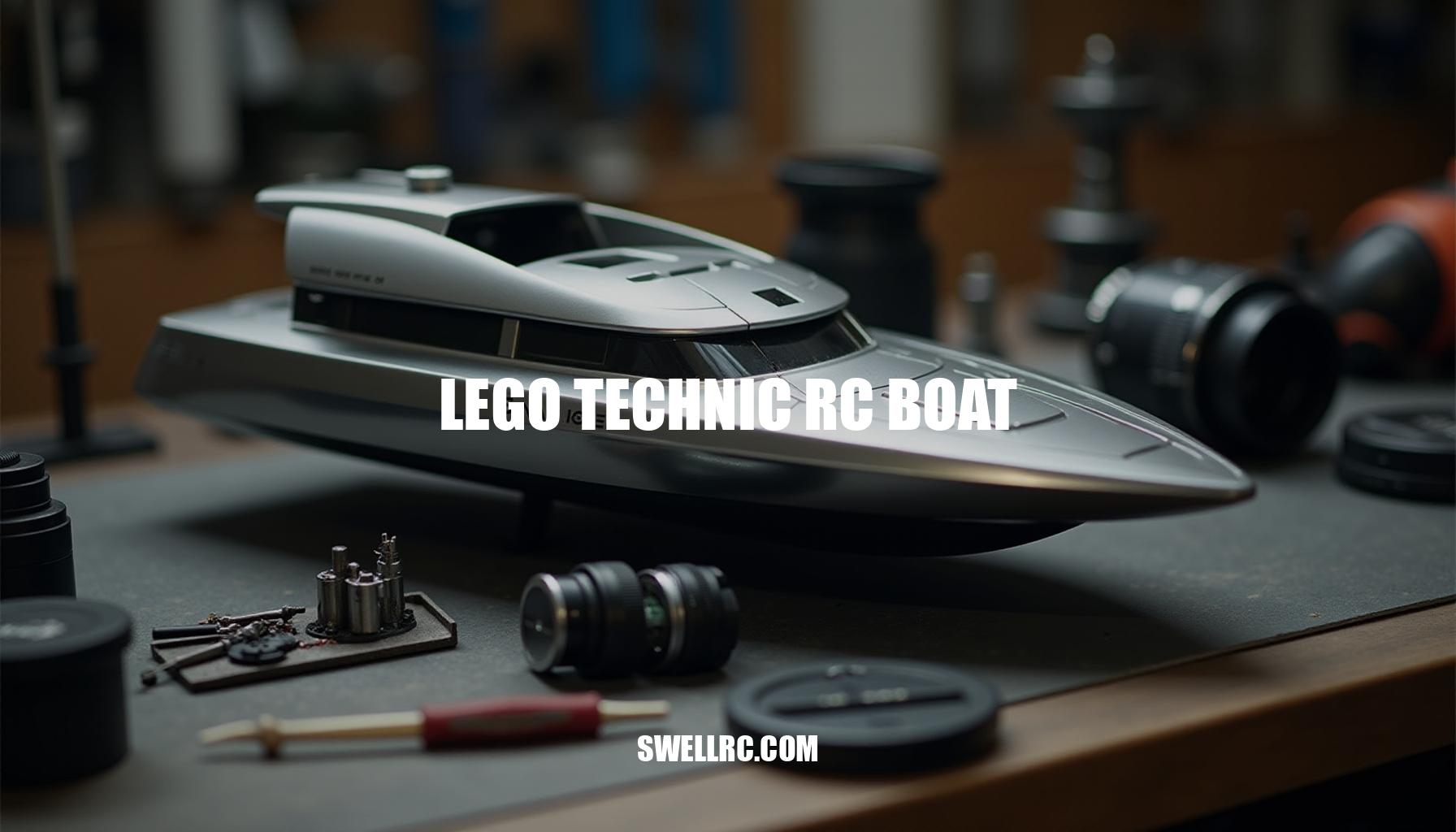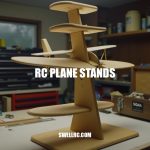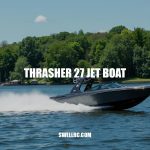Building a High-Performance Lego Technic RC Boat
It all began as a spontaneous weekend idea: could a collection of Lego Technic beams, gears, and a spare RC radio come together to create a functional RC boat? What started with a simple sketch soon evolved into a late-night prototype session, gradually transforming my living room into a workshop filled with props, servos, and buoyancy experiments. The thrill of witnessing my Lego Technic RC boat glide smoothly across the pond without nosediving hooked me instantly.
In this detailed guide, I’ll walk you through my personal build journey, sharing insights into making your own Lego Technic RC boat float, steer, and withstand splashes. From selecting the right motors and gearing to mastering buoyancy, waterproofing, and fine-tuning, I cover the essentials for successful DIY RC projects. Along the way, I drew inspiration from established remote control models noted for their compact design and stability, such as the Gizmovine RC Boat T03.
Whether you’re a seasoned builder or a newcomer intrigued by RC inspiration, this guide aims to fuel your passion for creating innovative RC boats using Lego Technic components.
How Lego Technic and RC Engineering Merge
Lego Technic serves as an exceptional structural playground featuring liftarms for building robust frames, axles for efficient drivetrains, and versatile gearboxes that allow you to trade speed for torque. To transform this modular system into a fully functional RC boat, I integrated hobby-grade electronics alongside Lego Technic power functions, incorporating a brushless or brushed motor as the propulsive force.
Key components included a waterproof ESC (electronic speed controller) to manage power delivery smoothly, a micro servo control dedicated to precise rudder movements, and a 2.4 GHz RC receiver for reliable wireless command input. All electronics were securely housed within a sealed, buoyant platform to ensure durability and water resistance, essential for successful operation in harsh conditions.
During the build, I rigorously tested various Lego Technic geartrains and axles to prevent gear slip under load, enhancing the drivetrain’s reliability. Using cross-bracing liftarms improved the hull’s structural design by maintaining rigidity and distributing stress uniformly throughout the frame.
If you’re new to motorized Lego projects, I highly recommend consulting detailed guides that emphasize modular design and iterative building:
- How to make a Lego RC car – a comprehensive guide to combining Lego Technic power functions with RC motor systems.
- Instructables-style RC boat build – excellent for step-by-step modular assembly and understanding waterproof RC components integration.
By leveraging these resources and techniques, you can harness the full potential of Lego Technic combined with advanced RC components to craft reliable, high-performance remote-controlled boats and vehicles.
Lego vs. RC-Grade Motors: What Changes on Water
Choosing the right power source for your Technic boat depends on several critical factors, including performance needs and integration complexity. Here’s a quick comparison to help you decide between RC-grade motors and Lego Technic motors:
| Aspect | RC-Grade Motors | Lego Technic Motors |
|---|---|---|
| Voltage and Torque vs RPM | Typically use brushed 540 or small brushless outrunners delivering significantly higher torque and sustained RPM, ideal for demanding water propulsion. | Lower torque and RPM, designed mainly for land-based models; sufficient for light loads but limited in water thrust. |
| ESC Requirements | Require a dedicated Electronic Speed Controller (ESC) offering forward/reverse control and proportional throttle response. | Use proprietary hubs/controllers integrated within the Lego system; no external ESC needed. |
| Waterproofing and Cooling | Often come with water-cooling jackets or marine-grade ESCs to handle moisture and heat effectively. | Require careful external waterproofing since electronics are not designed for wet environments. |
| Mounting and Propulsion Gearing | Need custom brackets and couplers to fit Technic builds but allow use of stronger propulsion gearing for enhanced thrust. | Motors mount natively on Technic frames with ready-to-use gearing, simplifying assembly but limiting maximum power. |
| Cost and Complexity | Higher cost and wiring complexity, requiring more integration effort but substantially boosting water performance. | Lower cost and plug-and-play simplicity, best for beginners or casual builds with moderate performance demands. |
In summary, if you prioritize high performance and are comfortable with additional ESC control and water-cooling requirements, RC-grade motors provide superior torque and RPM for your Technic boat. However, for ease of use and native compatibility, Lego Technic motors remain a solid choice for simpler, less demanding aquatic models.
Designing the Perfect Floating Base
Understanding buoyancy and weight balance is crucial in designing a boat hull that performs well and remains stable. Since boats float by displacing water equal to their weight, our hull must enclose enough air volume to support the total mass of heavy components like bricks, battery, motor, and electronics. To optimize stability, I learned to position these heavy elements low and centered, effectively managing the boat’s center of gravity to prevent unwanted rolling.
For the hull design, I constructed a rigid rectangular frame using Technic pieces, then skinned it with smooth panels, sealing all cavities to maximize displacement and minimize water ingress. The boat’s stability improved markedly after I widened the beam and incorporated small sponsons, which help in balancing the vessel and adding lateral resistance.
Examining commercial hulls further reinforced the importance of volume and hydrodynamics. For instance, the Toyabi RC Boat T03 (link) demonstrates how hull shapes impact displacement and resistance, while the AquaCraft UL-1 Superior (link) balances sleek design with sufficient buoyancy.
Inspired by these designs, I focused on reducing drag at the front of the hull and keeping the rear clean to optimize the hydrodynamics and efficiency of the prop wash.
| Aspect | Design Consideration | Effect |
|---|---|---|
| Buoyancy and Weight Balance | Enclose enough air volume, keep heavy parts low and centered | Supports total mass, prevents roll |
| Hull Design | Rigid rectangular frame with smooth panels and sealed cavities | Ensures hull integrity and enough displacement |
| Stability | Wider beam and addition of sponsons | Improved lateral balance and reduced tipping |
| Hydrodynamics | Reduced drag front, clean rear for prop wash | Enhanced speed and maneuverability |
Waterproofing Checklist I Actually Use
Ensuring the longevity and reliability of your RC boat starts with proper waterproofing techniques and leak prevention strategies. To protect your waterproof RC components, begin by housing your electronics bay in a sealed container such as a food-grade box or a printed pod equipped with a gasketed lid and cable glands to securely route motor and servo wires. Inside this bay, placing a desiccant packet helps control moisture.
When connecting the receiver and ESC, applying dielectric grease and using heat-shrink tubing on plugs can significantly reduce corrosion and enhance sealing.
- Electronics Bay: Use a sealed box with a gasketed lid and cable glands for secure wiring.
- Receiver and ESC: Protect plugs with heat-shrink and dielectric grease; include desiccant inside the bay.
- Battery: Wrap in a zip bag and add a foam pad to prevent chafing within the bay.
- Servo: Choose a waterproof model or cover the horn with a rubber bellows; seal any linkage pass-throughs to block water intrusion.
- Motor: Apply marine grease on the shaft; if using a flex shaft, incorporate a stuffing tube for effective sealing and add a simple splash shield.
- Float Failsafe: Insert closed-cell foam inside the hull to maintain buoyancy even if the bay leaks.
- Post-Run: Open the bay to air-dry and reapply grease to shafts as needed to maintain optimal performance.
By combining these methods—such as using stuffing tubes, dielectric grease, and closed-cell foam—you create a robust system for sealing electronics against water ingress, effectively preserving your RC model’s functionality and extending its lifespan.
Motors, Steering, and Power: Bringing the Boat to Life
When it comes to propulsion, selecting a motor that aligns with your boat’s size and weight is essential. I initially used a modest brushed motor setup, which provided a foundation, but later upgraded to a small brushless outrunner to enhance motor torque management and achieve a better thrust-to-weight ratio. For propeller choices, starting with a 30–40 mm plastic or nylon propeller was ideal during testing phases; transitioning to a balanced metal propeller later on significantly increased speed and efficiency.
Steering was efficiently handled using a transom-mounted rudder paired with a micro servo, leveraging servo control principles. Essentially, the receiver sends precise small position commands, enabling the rudder to turn smoothly left or right, enhancing maneuverability.
Regarding battery setup, finding the right balance is crucial. Opting for a higher voltage LiPo battery, such as 3S instead of 2S, can increase speed but also adds weight and necessitates careful waterproofing. My battery placement strategy involved positioning the pack low and slightly forward to prevent porpoising, ensuring stability during operation.
Effective cable management and implementing vibration isolation—using foam pads—played a key role in maintaining system performance. These measures helped my Electronic Speed Controller (ESC tuning) run cool and ensured the receiver remained glitch-free, ultimately improving reliability and control responsiveness.
Spec Snapshot: My Technic Build vs. Ready-to-Run
Reference points kept me honest on size and speed. The sleek Traxxas M41 Snap-On (see here) clearly demonstrates how much hull length contributes to stability at speed. I also really appreciated the creativity of this RC truck with RC boat combo (check it out), offering innovative transport and recovery ideas that are highly practical.
My own setup at best tune utilizes a small brushless motor, 2S LiPo battery, a 35 mm propeller, and weighs approximately 1.2–1.5 kg all-up. This combination results in a stable, quick boat that’s also easy to recover.
If your goal is top-end speed, it’s important to note how ready-to-run boats often employ low-drag hulls, efficient props, and advanced cooling systems—lessons directly transferable to the Technic models by maintaining clean wiring, centralized weight distribution, and ensuring the prop is fully immersed without causing cavitation. To give a clear overview, here is a spec comparison between my setup and the Traxxas M41:
| Specification | My Setup | Traxxas M41 |
|---|---|---|
| Motor Type | Small Brushless | Brushless |
| Battery | 2S LiPo | 3S LiPo |
| Propeller Size | 35 mm | 40 mm |
| All-up Weight | ~1.2–1.5 kg | ~1.8 kg |
| Hull Type | Custom Low-drag | Low-drag Deep-V |
Testing, Tweaking, and Real-World Fun
My first launch was nerve-wracking—the bow dug in and sprayed my face. After some field testing, I discovered that shifting the battery forward 15 mm and flattening the prop angle helped the boat track straight and finally start planing. However, choppy water quickly exposed weak points in my setup: the rudder linkage stiffness was insufficient at high speeds and flexed noticeably.
To counter this, I reinforced the rudder linkage with a stiffer Technic beam brace, enhancing overall control.
In order to improve my design, I benchmarked against sleek hulls like the Seaducer RC boats and compact speedsters such as the HJ808 RC Boat. This helped me visualize how much cleaner my waterline could be to optimize speed and stability.
Each testing session involved meticulous speed logging and temperature checks to monitor performance and mechanical health. I tracked:
- Run time
- Top speed via phone GPS safely tucked in a dry pouch
- Component temperatures
These small, incremental improvements stacked up quickly, drastically enhancing boat handling and efficiency.
What I Improved After Each Test
In this tuning process, several crucial tuning steps were implemented to enhance performance and stability. First, the center of gravity was moved forward and the battery tray lowered to effectively cut porpoising. Additionally, the steering throw was reduced by limiting the rudder throw to eliminate oversteer at full throttle.
To improve midrange performance, a slightly smaller, higher-pitch propeller was chosen, optimizing the prop pitch. To maintain a drier deck and reduce drag, splash rails were added strategically. Moreover, wires were re-routed and foam added under the ESC to reduce vibration.
Lastly, meticulous attention was given to electronics bay ventilation by adding a micro vent hole with a membrane, preventing pressure buildup within the electronics bay.
Optimizations and Pro-Builder Tips
When you’re ready to go faster and farther, incremental changes matter. Start with prop balancing and truing the shaft to eliminate vibrations effectively. A smooth operation is key to speed optimization, so try a dual-rate steering setup on your radio for precise turns and enhanced control.
Refining ESC timing and punch control helps achieve smoother launches and better acceleration curves.
- Experiment with 2S vs. 3S batteries and carefully monitor temperature to ensure safe and optimal performance.
- Use stiffer Technic beams and frame triangulation techniques to improve structural integrity and durability upgrades.
- Add thin plastic sheet fairings to reduce spray and enhance water flow around the hull.
For performance inspiration, take a look at the high-output mindset behind the Max Power W-09 RC Boat (Max Power W-09) — then adapt what fits a Technic hull build.
| Upgrade Area | Benefit |
|---|---|
| Prop Balancing & Shaft Truing | Reduces vibrations for smoother, faster runs |
| ESC Timing Adjustment | Optimizes motor efficiency and acceleration |
| Frame Triangulation | Increases durability and rigidity |
| Fairings | Improves hydrodynamics and reduces spray |
Advanced Upgrade Ideas (Pick a Few, Test, Repeat)
When it comes to optimizing your vessel’s performance, propeller tuning plays a critical role. You can start by conducting propeller swaps, testing different diameter and pitch combinations while beginning with conservative options to find the perfect balance. Proper shaft alignment is equally essential; using a rigid coupler and shims helps minimize runout, ensuring smooth operation.
For those experimenting with dual-motor setups, employing counter-rotating props can significantly improve straight-line tracking and maneuverability. Additionally, battery-motor tuning should be approached with care by matching the motor’s Kv rating to the voltage and propeller load, while closely monitoring temperatures to avoid overheating. To further enhance performance, consider aerodynamic and hydrodynamic tweaks such as adding chine rails and smoothing deck edges to reduce drag.
Lastly, incorporating a small tow eye at the front of the boat aids in recovery planning, allowing for quick and easy retrieval in case of emergencies or after demanding runs.
Where the Lego RC Journey Leads Next
This Lego RC journey taught me that creativity combined with solid engineering principles can transform simple plastic beams into a functional watercraft. Key lessons learned include keeping the hull buoyant and balanced, ensuring everything is waterproof—especially the electronics—and tuning one variable at a time for optimal performance.
Looking ahead, I’m excited to explore some future builds such as:
- Twin-motor catamaran designs for enhanced speed and stability
- A steerable jet drive module to improve maneuverability
- Modular decks that support various cameras and sensors for expanded functionality
If you’re starting out, my advice is to begin small, iterate quickly, and savor the moment when your Technic boat glides across the water—it’s a thrilling experience that never gets old.
Frequently Asked Questions
- How can you make a Lego Technic RC boat work on water?
Build a rigid Technic frame, enclose enough buoyant volume to displace your total weight, mount a hobby motor with a prop and rudder, and protect electronics in a sealed bay. Keep heavy parts low and centered, then test and tune battery position and prop angle. - What motors and batteries are best for a Lego RC boat?
A small brushed 540 or compact brushless outrunner paired with a waterproof marine ESC works well. Start with a 2S LiPo for manageable weight and temps; move to 3S only after confirming cooling and balance. - Can regular Lego pieces handle water exposure?
ABS bricks don’t mind occasional splashes, but they aren’t watertight and can trap moisture. Use sealants or an internal electronics bay, dry components after runs, and avoid submerging hubs or receivers. - What’s the difference between a Lego RC boat and a prebuilt RC model?
Prebuilt models have optimized hulls, efficient drivetrains, and waterproof electronics out of the box. A Lego RC boat is modular and creative but needs careful sealing, weight management, and tuning to approach similar performance. - How do you control buoyancy with Lego structures?
Increase internal air volume (sealed compartments), spread weight over a wider beam for stability, and place heavy items low. If the boat sits too low, remove weight or add sealed foam to increase displacement. - Is building a Lego Technic RC boat suitable for beginners?
Yes—start simple: a stable hull, a small brushed motor, a rudder servo, and a sealed electronics box. Test in calm water, change one variable at a time, and upgrade as you gain confidence.



